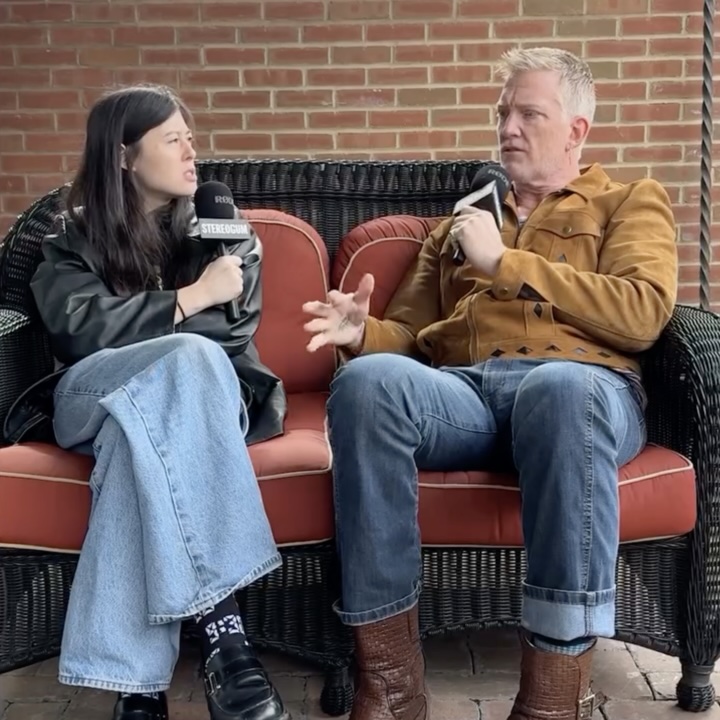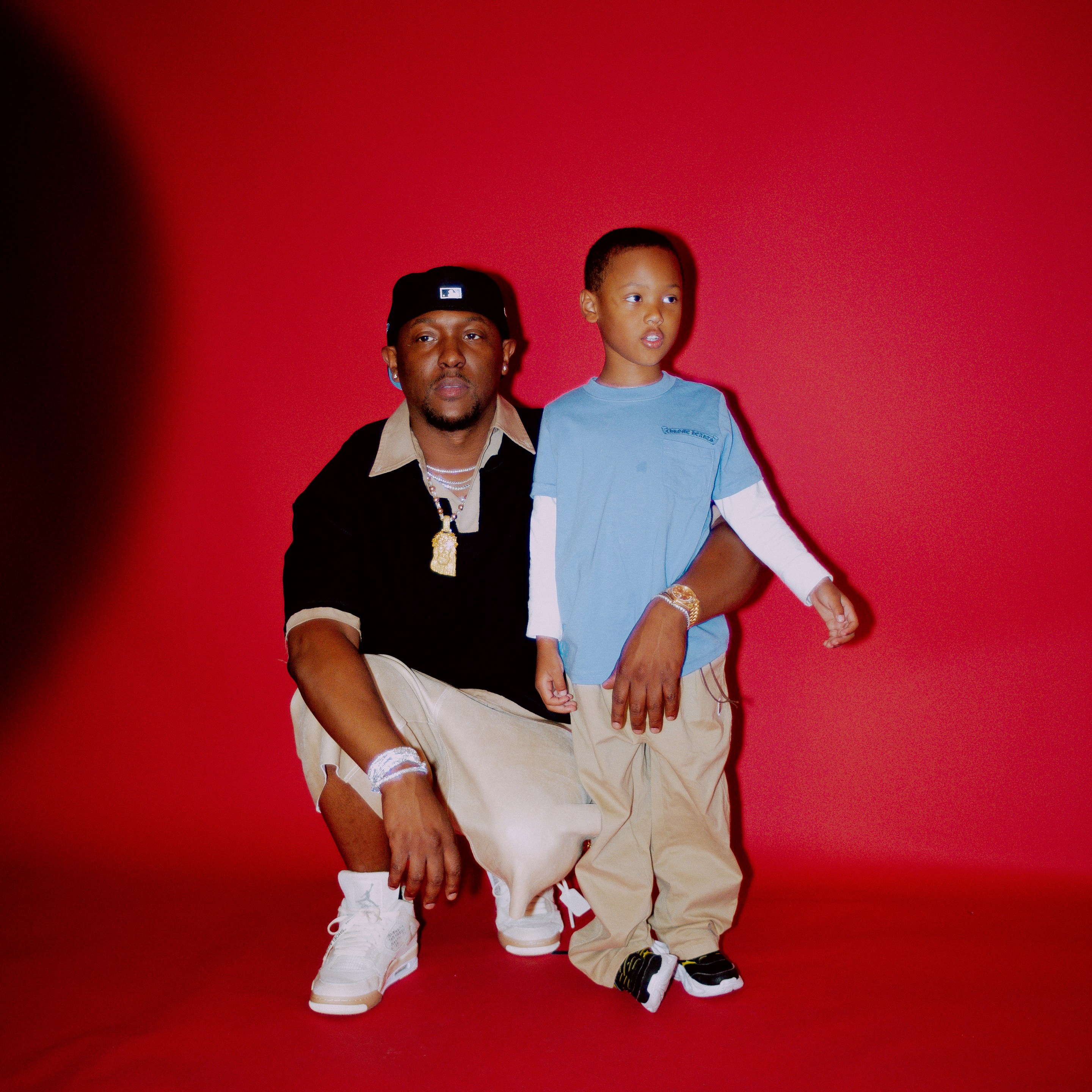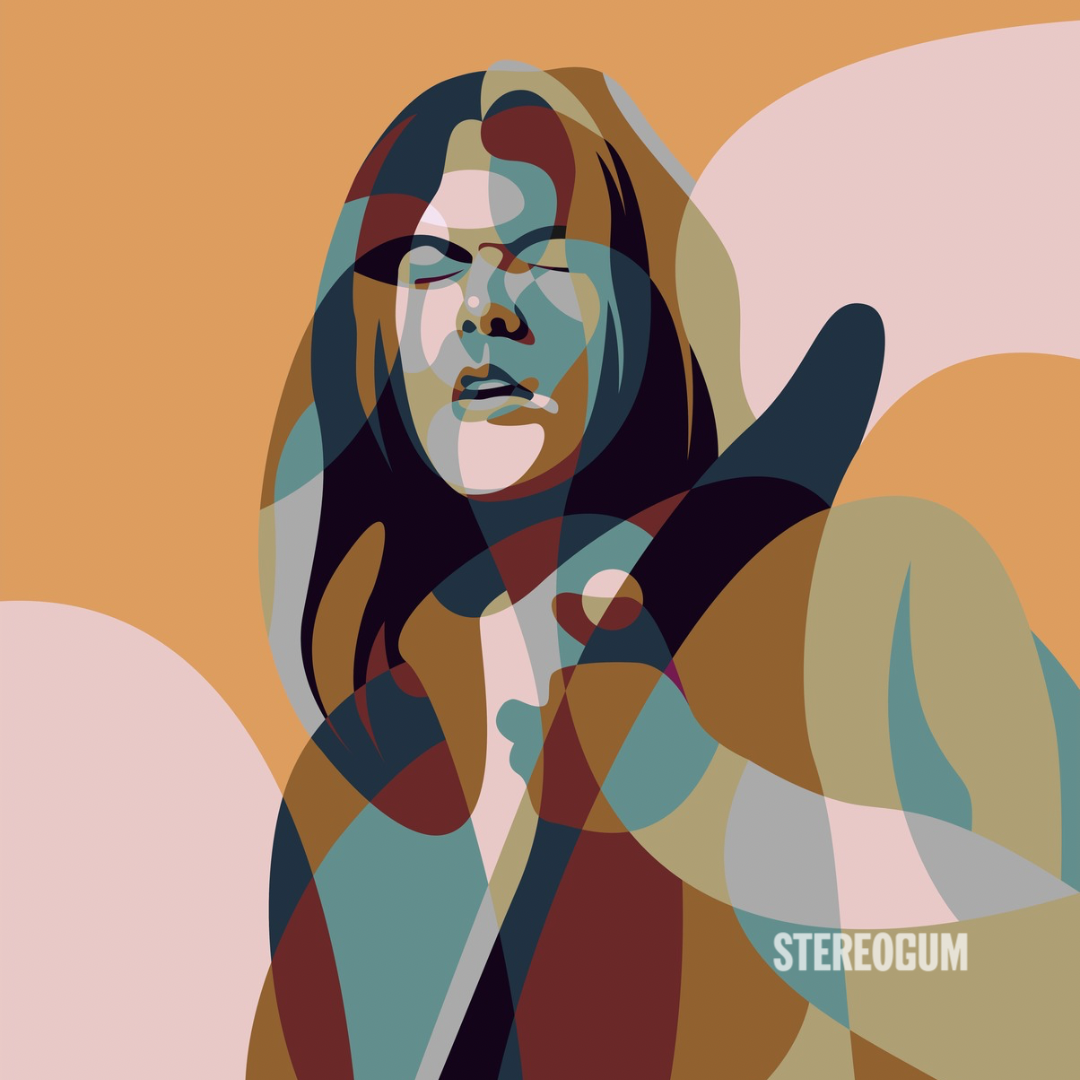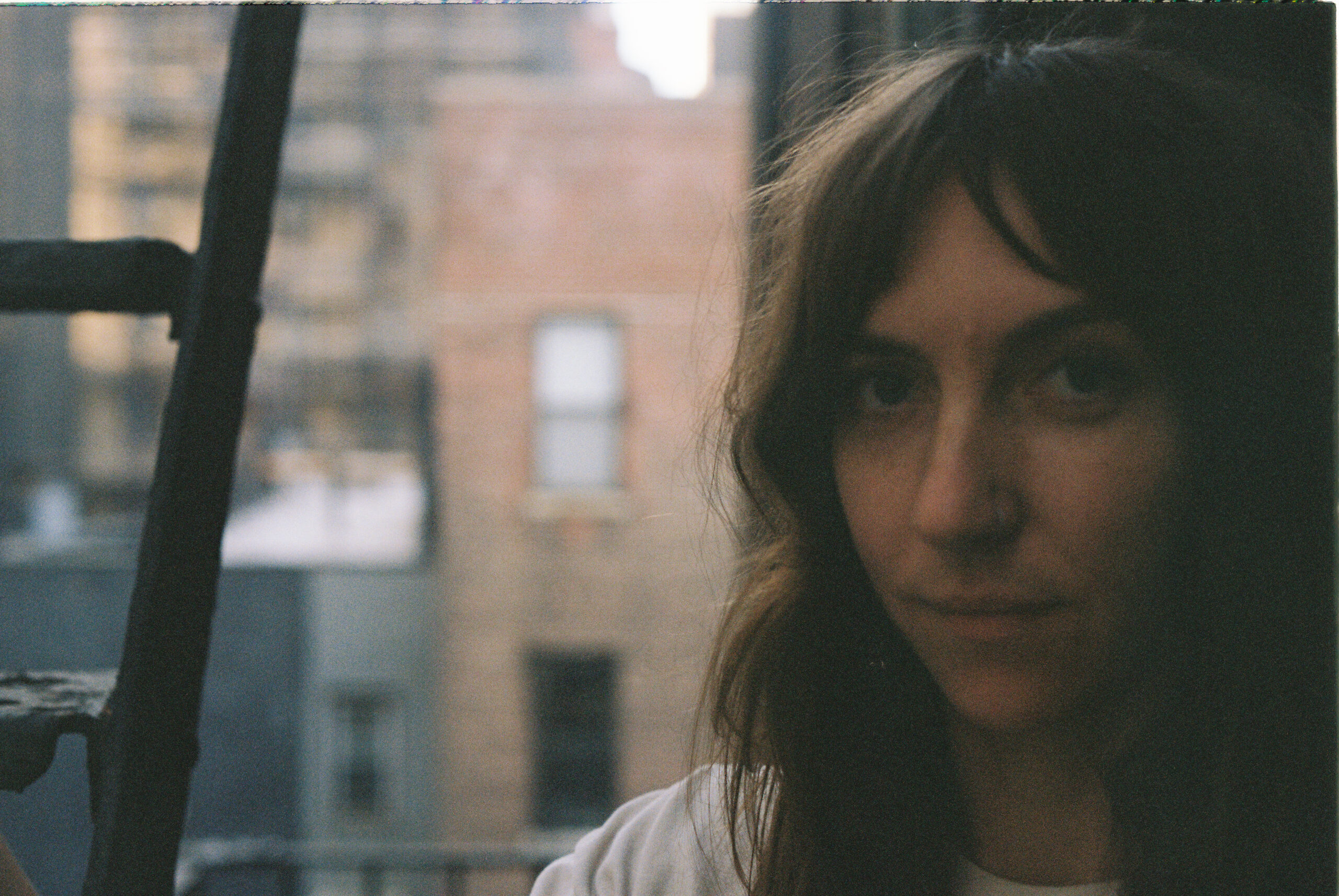On virtually the first day Australian psych-dance act Jagwar Ma started to write their sophomore album Every Now & Then, they were nearly struck by tragedy. Having ventured into the wilderness a few hours north of Sydney in search of inspiration, Jono Ma (production, synths) and Gabriel Winterfield (vocals, guitars) found themselves stranded without food. Seeing mullet fish all around them, the duo decided to try their hand at spearfishing.
“We were about to jump in so we could catch ourselves dinner,” explains Ma casually. “And out of nowhere this fisherman on a rock was like, 'I wouldn’t go in there, mate!' We’re like, 'It’s fine, what are you talking about?!', and he goes, 'Nah, there’s a massive shark in there!' And at that exact moment, a bronze whaler just tore through this school of fish about two meters from us. We were like, 'Yeah, OK, we won’t go in this time!'"
Sensing they perhaps weren’t quite cut out for the nomadic lifestyle, the two songwriters retreated back to the city, holing up in a makeshift studio to get started on some basic tracks. When they felt they’d written enough, they headed for Europe -- which had become something of a base for them following the release of debut album Howlin’ in 2013. They spent months ensconced in a crumbling studio in the middle of the French countryside, and at another self-built complex deep in an industrial estate in Tottenham, North London -- where coincidentally, they ended up sharing the corridors with UK dance and producer pioneer Andrew Weatherall.
The resulting album, which is released via Mom + Pop/Marathon on 10/14, is as rich and varied-sounding as the numerous places it was spawned, blending Beach Boys harmonies with fiery nods to Chicago house, Madchester, Love’s Forever Changes and half-forgotten '60s soul classics. In their first in-depth interview since returning with new tracks “OB1," I caught up with Ma and Winterfield in London to get the lowdown on one of 2016’s most keenly anticipated new albums. Read our Q&A and listen to their new single "Give Me A Reason" below.
STEREOGUM: Following the shark encounter in Australia, you returned to the same French farmhouse where Howlin’ was recorded to make the bulk of Every Now & Then. On the first day, when you opened that familiar door, did it feel like you’d come home?
GABRIEL WINTERFIELD: Yeah, totally! It was very much like that. When you tour endlessly, after a while all you think about is getting back in the studio. When you’ve been in the studio for ages all you think about is getting back on the road. We’d spent a good two and a half years touring Howlin’ and by the end of it we were chomping at the bit to get back in there and write new songs. So it was like: “Yes!”
STEREOGUM: The studio, which is in La Brèche, has been described as a “run-down farmhouse” – how bad is it really?
WINTERFIELD: A lot of people are like, “Wow! Is it like Exile On Main Street?” And we have to go, “Naaaah! It’s more Withnail And I…” You see the shots of Exile and it’s this chateau on a river with beautiful women swanning around. Whereas this place is really just two bros hanging out around an oven -- with a chicken inside on a brick!
[videoembed size="full_width" alignment="center"][/videoembed]
JONO MA: It’s a little more complicated than people think. Basically, an old friend of mine owns this property and he had this dream of building a studio there. So I went and helped him with that, and it meant that when Gab and I were finally working on a record it made a lot of sense for us to go there, live there and work in the studio. It worked for the first album, so we figured we’d do it again for this record. It feels like our space.
STEREOGUM: You must feel a real connection if you’ve built the studio from scratch?
MA: The studio in Sydney we built, and the one in London too, which we call Le Bunker. That’s kind of how we do it. I like to literally build the environment that you’re gonna make the music in and set it all up. With Le Bunker, it’s in Tottenham and it’s actually in an industrial estate. It’s really cramped because Ewan Pearson [Jagwar Ma’s go-to mixer] and Andrew Weatherall both have their record collections there. It’s quite a healthy collection, as you can imagine.
STEREOGUM: Did you take a look?!
MA: Oh, yeah! It’s kind of like having your own record store. Or library! Everyone wants to go, but you’re not allowed to. It’s a secret location -- not open to the public, yet.
STEREOGUM: I can hear a lot of Weatherall in the new record -- the songs are almost exclusively all epic, very psychedelic and constantly evolving, which are traits he’s renowned for. Was he an influence?
MA: He’s an absolute legend in my eyes. He was around, but we started the record in Australia, and then we went to France and we fleshed it out there. For the final stages, the pre-mix stages, we were in London. So Andrew was in close proximity towards the end. But I think most of the themes and the music had been written by that point, so I don’t think he’s had a direct influence per se. But just being around him has been a massive inspiration.
STEREOGUM: It also sounds like a worldwide album -- as if it couldn’t be tied to one city or country.
WINTERFIELD: I think that’s because our sense of nativity in recent years has become somewhat skewed. I mean, I literally don’t live anywhere right now, which is kind of fun. But I also think that’s just the way the music has progressed. I remember reading an interview with Andre 3000 and he was talking about Outkast’s hip-hop sound in the ‘90s, and how he’s from Atlanta, GA. And because of where that place is geographically located --- it’s not on the East Coast and it’s not on the West Coast -- he felt that as an artist, he was looking at what was happening in New York just as much as what was happening in the west. Which is quite a unique hybrid. I feel like Australia is very much like that with the America’s and Europe -- we’re almost equidistant from both. If you’re looking at what’s happening in both of those hemispheres, you can end up with a blended form of art and music.
STEREOGUM: Talk me through “Give Me A Reason”. At seven minutes long, it’s certainly the most epic track you’ve released as a single.
WINTERFIELD: Yeah, it’s far out man. It’s like starting over. The first lyric is: "Now we’re back to the start," because we were back in France, doing it again, giving it another crack. And towards the end, there’s that ‘other’ character -- the amoeba thing I sing about. That’s pushing it!
STEREOGUM: That’s my favorite part.
MA: It’s funny because I like doing that thing where a song flips and goes into an unexpected world. I had the song going to that 'acid' section [towards the end] for a while. It even changes key. And we deliberated: Does it stay, or does it go? Gab was thinking maybe it didn’t need to be there. But when we were doing the final vocal bits back in London, we were recording late at night. Gab had just finished recording his part, but I let it run and then he just decided to have fun with the end bit. That’s how it turned into the infamous outro.
WINTERFIELD: It’s a symbolic totem of delirium, which came after working on the song for so long.
STEREOGUM: Another track, “Say What You Feel," is much more lucid. There’s a great lyric -- “Pride has no place in this room” -- which seems particularly deep.
WINTERFIELD: It’s about being honest with someone you love, quite simply. And trying to have those often-difficult conversations with somebody where pride can get in the way of telling the truth. And also, pride can get in the way of you being honest with yourself. I remember when we were working on that track, from the studio you can see a church, and the idea of those spiritual, gospel preachers slamming their fists down on the tabernacle and saying, “Pride has no place in this room,” just came to me. Those evangelical pastors in certain states in America, you know? We watched The Blues Brothers too, so many times, and the incredible, amazing scene with James Brown as the pastor was a big inspiration, certainly towards the end of that track. It begins quite timidly, perhaps even shyly, and then it turns into this righteous sense of catharsis. It’s about trying to make sense of a situation that you’re in.
STEREOGUM: Are you a late night/early morning band when it comes to the studio?
WINTERFIELD: We actually keep pretty different hours. It’s good to have our own space. So for this album, Jono would work on a beat during the day and I’d be asleep, and then I’d get up at 2PM or 3PM and start listening to it and I’d work until about six in the morning and then be like [puts on a croaky voice], “Hey man, have a listen to this!” I’ve always enjoyed working at night -- I think it’s the quiet. And then I get excited to show Jono something that I’ve just sung or worked on the night before over one of his beats.
MA: When it comes to the songs, it’s definitely fifty-fifty. We have very clearly defined roles -- Gab’s focus is on vocals, and my focus is on the rhythm section and the core of the music. That feels really balanced. When it comes to the production side of it, that definitely falls more on my responsibilities because that’s what I’m into -- producing music, and the technicalities of it. So there are two separate things, one of which is the music making, which we do equally.
STEREOGUM: Aside from the two of you and [bassist] Jack Freeman, who else plays on Every Now & Then?
MA: Stella [Mozgawa, Warpaint] is on it. I’ve actually been friends with Stella since we were teenagers. We played in a band in high school together, and she’s from the same area in Sydney as me. On the last record she drummed on the outro of “Come Save Me” and on this record I actually got her to drum on almost every track, just so I had more beats to choose from. We could cut different beats for different sections -- I can’t actually remember which ones stayed and which ones didn’t, but she probably ended up drumming on half the songs on the record. Sometimes it was just a hi-hat layer to go over a programmed beat, sometimes it was a drum fill, or tambourines and percussion. But she’s woven in there! Elsewhere, James Ford plays timpani on one track, and Ewan does some additional synths on a couple of tracks. It’s interesting -- one record we went back to while making it was Paul’s Boutique. The Dust Brothers work on that was immense, where they drew on little snippets from anywhere and mismatched things to create this tapestry, this mosaic of different sounds with different emotional reference points. That’s what was interesting to me.
STEREOGUM: Is it fair to say you looked at Paul’s Boutique and thought: “Let’s tap into that but create the samples ourselves”?
MA: Oh yeah, 100-percent. You couldn’t make a record like Paul’s Boutique now -- there are good reasons why the Avalanches took 16 years to make their new record! We don’t work that way -- we’re still writing our own music. But if you can do that thing where you can flip the tonality of the music on its head and even switch emotions at any moment…
STEREOGUM: How important are the Avalanches to you?
MA: When we were growing up they were a huge influence. Getting into Since I Left You opened up this world where I could sample and use beats and combine any two unpredictable pieces of music and make them work together.
WINTERFIELD: I feel like we just romantically like a lot of different types of music and it’s gonna naturally show itself in a lot of output. The narrative of Avalanches tracks, where it meanders through the music of the last hundred years is quite a romantic thing.
STEREOGUM: You’ve supported Tame Impala, Foals and the xx on tour -- all of whom have gone from being buzzy breakthrough acts to high profile festival mainstays in the space of a few albums. Do you want to follow the same trajectory?
WINTERFIELD: I think so. Those bands are far more progressed and they’re much bigger than us, but if we could, we would. If we’re lucky enough to play in front of more people, then instead of buying fur coats and shit like that, we’d probably pour it straight into the production of the show and make the shows bigger and bigger and bigger. We’re already at that point where we wanna incorporate and have an incredible visual accompaniment along with lighting and do everything live. But it’s how much you can afford to do.
STEREOGUM: And how well you can do it on a budget?
WINTERFIELD: Exactly. We want to do it right. It’s very inspiring watching the Chemical Brothers play -- the scale of their production! Even watching Tame now, obviously we’ve known Tame for a while and seen their ascension, but now they’re a really big rock 'n' roll band -- confetti cannons and stuff.
STEREOGUM: Is it liberating to tour with them and see how they’ve done it without selling out? Do you think to yourselves: “OK, there is a way we could do that too”?
WINTERFIELD: Absolutely. Although I don’t know whether it’s as simple as saying, "Well, if we do this, then we’re gonna be huge"!
MA: To go one step further, I think what you’re perhaps alluding to is now we’re friends with a lot of these guys, we can talk about music with them, and how certain aspects were done. I can talk to Jamie from the xx about synths, and certain synths we’ve used on certain songs. And you can break it down. When we’re on tour with Tame Impala we can talk to their video guys about how they were doing a lot of the live projections. From that, you get ideas, and you understand process more. It definitely rubs off.
[videoembed size="full_width" alignment="center"][/videoembed]
STEREOGUM: Talking of synths, is “O B 1” an ode to the Oberheim OB-1?
MA: It is! It was probably the first thing that was made for this record, and the title comes from the synth. We actually ended up changing the name later on to adapt to lyrics Gab had written, and then it ended up going back to the first title.
STEREOGUM: The other obvious single, for me, is “Ordinary”, which is almost a blue-eyed pop-soul track.
WINTERFIELD: That one is probably one of the landmark tracks. “Say What You Feel” is quite reminiscent of the first record -- it’s almost a cousin song to “Let Her Go” or “Come Save Me”. But “Ordinary” was definitely a song that we were only capable of writing after putting out a record, because the subject matter is very much about the experiences we’ve had over the past two or three years. On Howlin’ there were a lot of references to the Manchester scene and that world, which was very flattering, but a point of reference for this album was that it definitely became more soul inspired. Rapping without actually rapping -- that was the vibe of that song.
STEREOGUM: You mentioned at the start how keen you were to get back into the studio again. After such a long and varied period making Every Now & Then, how nerve-wracking is it to finally have the record completely finished?
WINTERFIELD: This time around, we’re both a bit more suspicious. Maybe there’s more invested in it. A lot of the questions you get asked are, “Was there a pressure about writing the second album?” Obviously there is a little bit of that, and you don’t wanna ignore it, but you also don’t wanna let it crush you. Now that it’s actually finished, it’s like: “OK, here goes!” It’s like we’re throwing our cards down on the table.

Every Now & Then tracklist:
01 "Falling"
02 "Say What You Feel"
03 "Loose Ends"
04 "Give Me A Reason"
05 "Ordinary"
06 "Batter Up"
07 "O B 1"
08 "Slipping"
09 "High Rotations"
10 "Don't Make It Right"
11 "Colours Of Paradise"
Every Now & Then is out 10/14 via Mom+Pop/Marathon.






